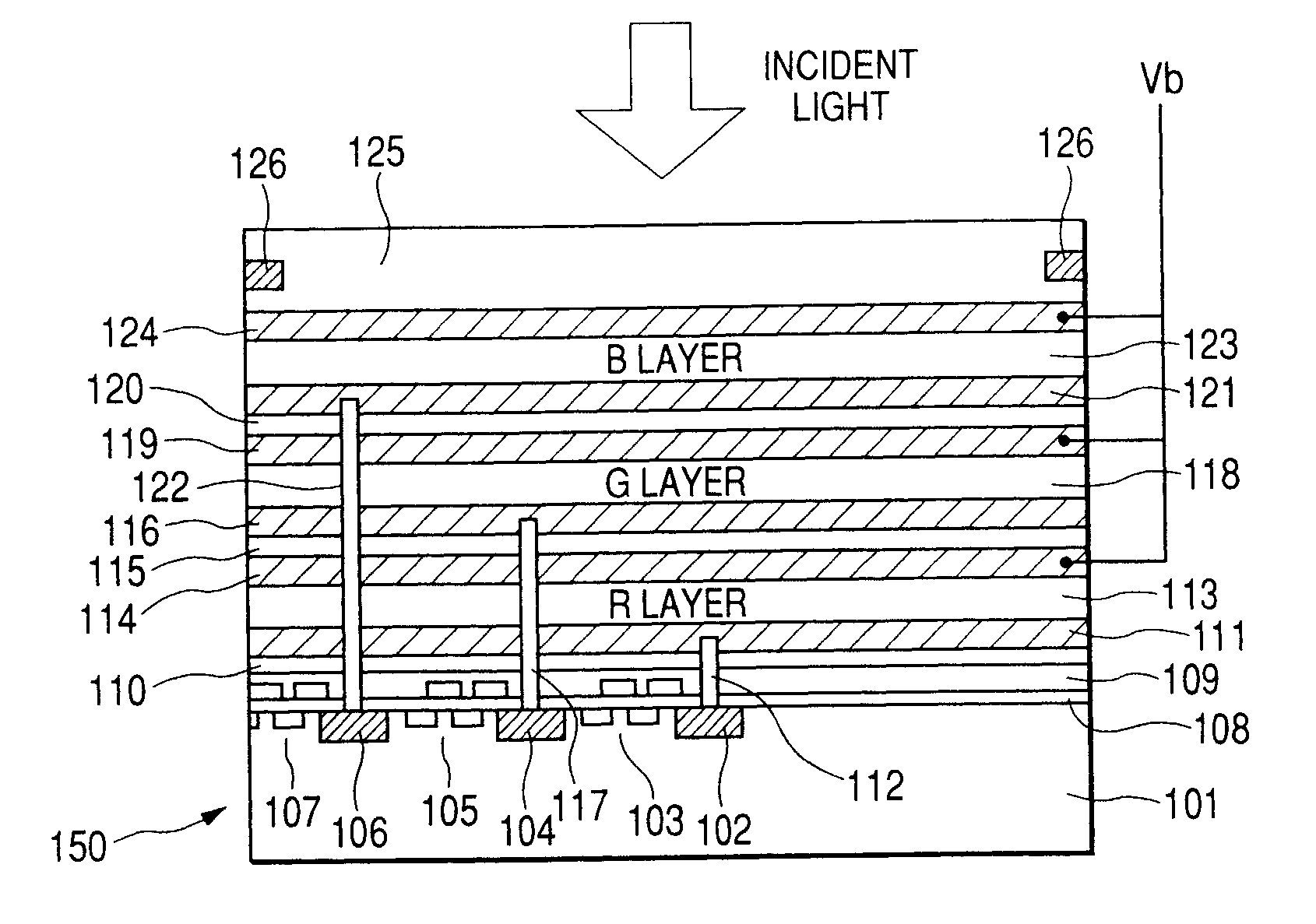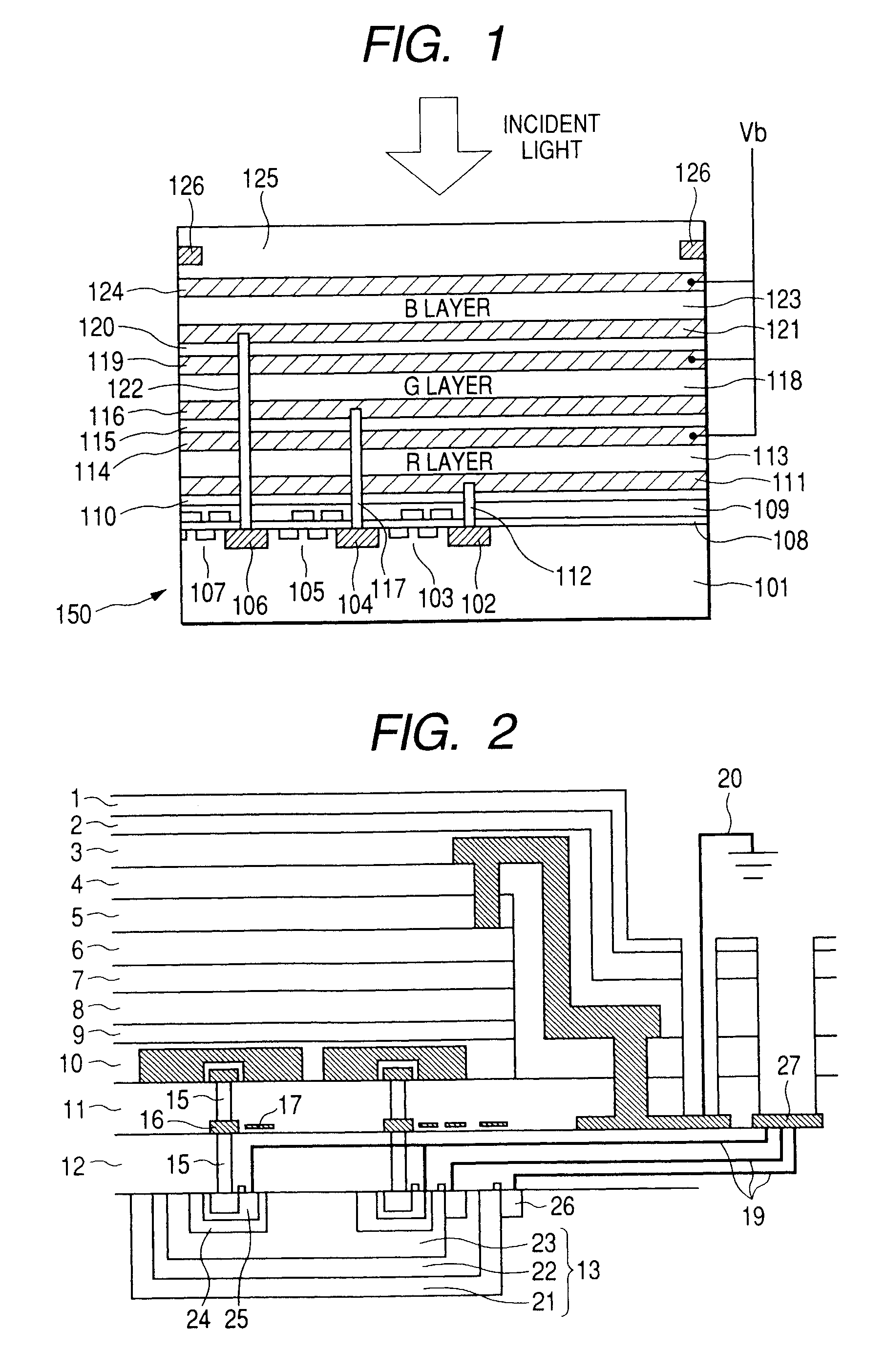Photoelectric conversion layer, photoelectric conversion device and imaging device, and method for applying electric field thereto
a technology of photoelectric conversion and imaging device, which is applied in the direction of semiconductor/solid-state device manufacturing, electrical apparatus, semiconductor devices, etc., can solve the problems of inevitably large dimension and weight of imaging device of such a three-plate type structure, and achieve excellent color reproducibility, high photoelectric conversion efficiency, and narrow half-value width of absorption.
- Summary
- Abstract
- Description
- Claims
- Application Information
AI Technical Summary
Benefits of technology
Problems solved by technology
Method used
Image
Examples
example 1
[0224] A rinsed ITO substrate was placed in a vapor deposition device and subjected to vapor deposition with the following Compound (S-1) in a thickness of 30 nm. Compound (29) of the invention was then subjected to vapor deposition in a thickness of 30 nm thereon, thereby preparing an organic pn stack type photoelectric conversion layer. Next, a patterned mask (with a light receiving area of 2 mm×2 mm) was placed on the organic thin layer and subjected to vapor deposition with aluminum in a thickness of 100 nm within the vapor deposition device, and a drying agent was subsequently charged, thereby sealing the device. There was thus prepared a photoelectric conversion device (Device No. 101). A comparative photoelectric conversion device (Device No. 102) was prepared by replacing the Compound (29) of the invention by the following Compound (S-2).
[0225] Next, the respective devices were evaluated in the following manners.
[0226] With respect to each of the devices, the case where a...
example 2
[0229] A rinsed ITO substrate was placed in a vapor deposition device and subjected to vapor deposition with the foregoing Compound (S-1) in a thickness of 30 nm. Compound (25) of the invention was then subjected to vapor deposition in a thickness of 30 nm thereon, thereby preparing an organic pn stack type photoelectric conversion layer. Next, a patterned mask (with a light receiving area of 2 mm×2 mm) was placed on the organic thin layer and subjected to vapor deposition with silver in a thickness of 100 nm within the vapor deposition device, and a drying agent was subsequently charged, thereby sealing the device. There was thus prepared a photoelectric conversion device (Device No. 103).
[0230] Next, with respect to the case where a bias was not applied, the wavelength dependency of external quantum yield was evaluated by using a solar module evaluation system manufactured by Optel. The results obtained are shown in Table 2.
[0231] Device No. 103 of this Example exhibited a high ...
example 3
[0232] By using each of the device of Example 1 according to the invention in the G layer as shown in FIG. 1, it is possible to prepare a color imaging device exhibiting excellent color separation.
[0233] By using each of the photoelectric conversion sites of Examples 1 and 2 which are capable of absorbing G light in the portions 8 and 9 of the photoelectric conversion site as shown in FIG. 2, it is possible to prepare a color imaging device exhibiting excellent color separation.
PUM
 Login to View More
Login to View More Abstract
Description
Claims
Application Information
 Login to View More
Login to View More - R&D
- Intellectual Property
- Life Sciences
- Materials
- Tech Scout
- Unparalleled Data Quality
- Higher Quality Content
- 60% Fewer Hallucinations
Browse by: Latest US Patents, China's latest patents, Technical Efficacy Thesaurus, Application Domain, Technology Topic, Popular Technical Reports.
© 2025 PatSnap. All rights reserved.Legal|Privacy policy|Modern Slavery Act Transparency Statement|Sitemap|About US| Contact US: help@patsnap.com



